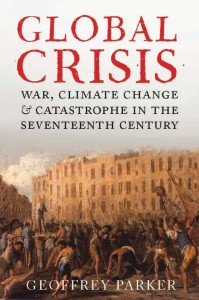The Seventeenth Century – Bad for Everyone, China Included
Posted: August 10th, 2013 | No Comments »An interesting review in the July edition of the Literary Review by Timothy Brook (of the excellent reads The Troubled Empire and Vermeer’s Hat etc) of Geoffrey Parker’s Global Crisis: War, Climate Change and Catastrophe in the Seventeenth Century that may not have immediately come to the attention of China Watchers and China Rhymers. Interesting in that the book discusses the global notion of the terrible seventeenth century rather than the Euro-centric approach to its awfulness (30 Years War, etc) that many of us got at school. It might also be interesting to those looking to China’s past as a possible guide to its future and indications of just how fast things can fall apart….
Basically – China at the start of the century was in passably good shape, reasonably well governed and with a strong economy. However, within 30 years it had descended into fratricidal civil war, the fall of Peking to the mob, suicide of the last Ming emperor in 1644 and then the fall of the Ming to the Manchus from outside China’s borders and the shift in dynasties. That ended China’s growth and saw a retreat into isolation till nearly the end of the century and arguably beyond.
Parker’s book looks beyond the immediacy of war, bad governance and rotten emperors to the environment – global cooling, reaching its peak in the seventeenth century and destroying harvests leading to famine with little in the way of a government response, emptied treasuries and reserves, epidemics and sickness the healthcare system couldn’t deal with and, to use today’s terminology, a breakdown in “social harmony”. Throw in natural disasters like earthquakes and a rash of dragon sightings (these days it’s usually UFOs) and it all got too much for the Ming.
So, a useful guide to China’s role in the global economy and its perilous position in the 1600s – as to parallels to today’s natural disasters, healthcare and environmental degradation and any possible dragon sightings, I’ll leave you all to draw your own conclusions on where that leaves “social harmony” and the prospects of regime survival in the twenty first century.
Revolutions, droughts, famines, invasions, wars, regicides, government collapses—the calamities of the mid-seventeenth century were unprecedented in both frequency and extent. The effects of what historians call the “General Crisis” extended from England to Japan, from the Russian Empire to sub-Saharan Africa. The Americas, too, did not escape the turbulence of the time.
In this meticulously researched volume, master historian Geoffrey Parker presents the firsthand testimony of men and women who saw and suffered from the sequence of political, economic, and social crises between 1618 to the late 1680s. Parker also deploys the scientific evidence of climate change during this period. His discoveries revise entirely our understanding of the General Crisis: changes in prevailing weather patterns, especially longer winters and cooler and wetter summers, disrupted growing seasons and destroyed harvests. This in turn brought hunger, malnutrition, and disease; and as material conditions worsened, wars, rebellions, and revolutions rocked the world.
Parker’s demonstration of the link between climate change, war, and catastrophe 350 years ago stands as an extraordinary historical achievement. And the implications of his study are equally important: are we adequately prepared—or even preparing—for the catastrophes that climate change brings?
Geoffrey Parker is Andreas Dorpalen Professor of History at The Ohio State University, and winner of the 2012 Heineken History Prize. Among his many books is The Grand Strategy of Philip II, published by Yale.

Leave a Reply